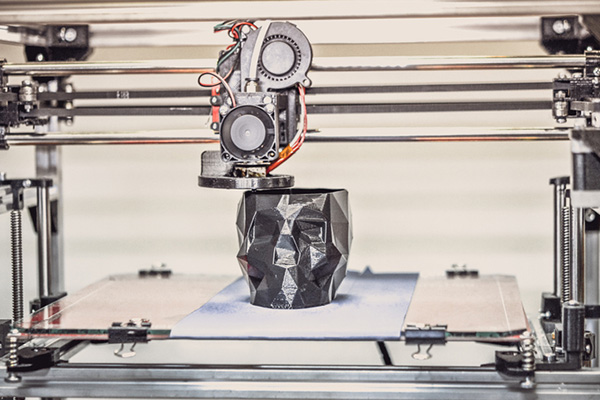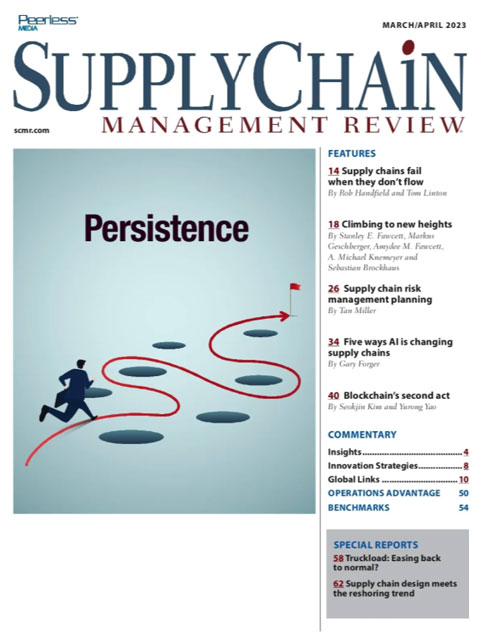Sorry, but your login has failed. Please recheck your login information and resubmit. If your subscription has expired, renew here.
March-April 2023
In June 2013, Frank Quinn stepped down as the only editorial director Supply Chain Management Review had ever known. “In thinking about those whom I’m indebted to for the success of SCMR over 16 years, there is one constituency that must rank first on the list—you, the reader,” Frank wrote, as he handed over the reins to Bob Trebilcock. Now, Bob has done the same, handing over the reins to the next generation. I am very proud to be that next generation. In a farewell letter of sorts, Bob wrote that he was the “old” and I as the “new.” Nothing could be further from the truth. There is no old or new, only continuity. That continuity is… Browse this issue archive.Need Help? Contact customer service 847-559-7581 More options
Just imagine that you are building a LEGO rocket ship and you lost a critical engine block piece that prevents you from completing and launching the rocket. Most people have experienced this show stopping sense of frustration, rendering the whole effort futile and the outcome disappointing. LEGO has an online platform that you can search by color, part name, category, and keyword; however, you must wait for LEGO to ship you that one specific piece.
In the future, imagine a kiosk in a public place or a nearby coffee shop that will be able to print out that missing part for you to pick up or have delivered to your home. This is the promise of 3D printing, or additive manufacturing technology; no missing LEGO piece can block your imagination and prevent you from fulfilling your vision.
So, just what is additive manufacturing?
According to the MIT Sloan School of Management, additive manufacturing (AM) is a process used to create an object by building it one layer at a time. The most popular AM technology is referred to as 3D printing (Gartner adds “using a device to create physical objects from digital models”) and the technology is evolving and becoming more popular with the “early majority” in recent years. The basic process involves adding layers of raw material in a shape or design that has been uploaded to the printer via a digital link to a computer or wirelessly connected device.

This complete article is available to subscribers only.
Log in now for full access or start your PLUS+ subscription for instant access.
SC
MR
Sorry, but your login has failed. Please recheck your login information and resubmit. If your subscription has expired, renew here.
March-April 2023
In June 2013, Frank Quinn stepped down as the only editorial director Supply Chain Management Review had ever known. “In thinking about those whom I’m indebted to for the success of SCMR over 16 years, there is… Browse this issue archive. Access your online digital edition. Download a PDF file of the March-April 2023 issue.Just imagine that you are building a LEGO rocket ship and you lost a critical engine block piece that prevents you from completing and launching the rocket. Most people have experienced this show stopping sense of frustration, rendering the whole effort futile and the outcome disappointing. LEGO has an online platform that you can search by color, part name, category, and keyword; however, you must wait for LEGO to ship you that one specific piece.
In the future, imagine a kiosk in a public place or a nearby coffee shop that will be able to print out that missing part for you to pick up or have delivered to your home. This is the promise of 3D printing, or additive manufacturing technology; no missing LEGO piece can block your imagination and prevent you from fulfilling your vision.
So, just what is additive manufacturing?
According to the MIT Sloan School of Management, additive manufacturing (AM) is a process used to create an object by building it one layer at a time. The most popular AM technology is referred to as 3D printing (Gartner adds “using a device to create physical objects from digital models”) and the technology is evolving and becoming more popular with the “early majority” in recent years. The basic process involves adding layers of raw material in a shape or design that has been uploaded to the printer via a digital link to a computer or wirelessly connected device.
SC
MR


Latest Supply Chain News
Latest Podcast

 Explore
Explore
Topics
Procurement & Sourcing News
- Strengthening customer fulfillment: Building a strategic stakeholder network
- Trump picks former Wisconsin congressman Sean Duffy for DOT secretary
- Made in Mexico, manufactured by China
- Retail sales see gains in October, reports Commerce and NRF
- Geopolitical readiness in supply chains: Strategic challenges for leaders
- With capacity to spare, logistics real estate demand remains subdued
- More Procurement & Sourcing
Latest Procurement & Sourcing Resources

Subscribe

Supply Chain Management Review delivers the best industry content.

Editors’ Picks





